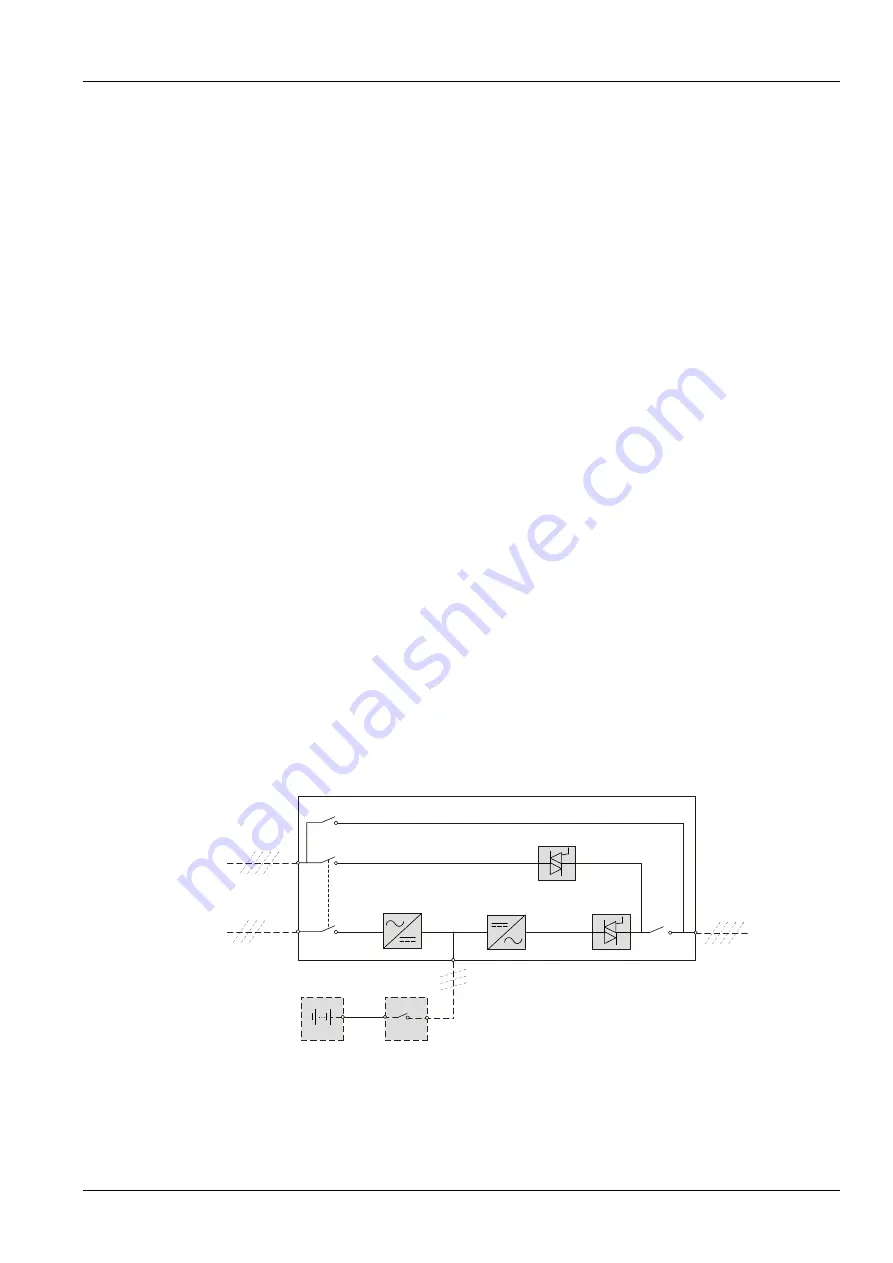
Chapter 1 Overview 3
NX UPS Single Module And Parallel System 250kVA ~ 800kVA User Manual
Overload
If the inverter is overloaded or the inverter current remains outside the specifications (refer to Table 11-6) longer than
the specified time, the load will be automatically transferred to the bypass without power interruption. If both the
overload and the current are reduced to a level within the specified range, then the load will be transferred back to the
inverter. In case of output short circuit, the load will be transferred to the bypass, and the inverter will shut down. Five
minutes later, the inverter will start up automatically. If at this point the short circuit is removed, the load will be
transferred back to the inverter. The transfer is determined first of all by the features of the protection device of the system.
In the above two situations, the UPS operation control panel will display alarm message.
(Parallel system)
The control logic system constantly monitors load requirements and controls the power supplied by
the UPS modules. In the event that an overload condition is sustained for greater than a preset time, the load will
transfer to the bypass mains supply, when the number of active modules is unable to satisfy load requirements. The
load returns to the inverter supply if the power is reduced to a value that can be sustained by the number of active
modules in the system.
Maintenance bypass
The UPS has a second bypass circuit, i.e. maintenance bypass, which provides a safe working environment for the
engineers to provide regular maintenance or repair to the UPS system and at the same time provide unregulated
mains supply to the loads. The maintenance bypass can be manually selected through the maintenance switch. It can
be disconnected by turning the switch to OFF.
1.2.4 UPS Power Supply Switch Configuration
250kVA~400kVA
There are four switches: Q1, Q2, Q3, and Q5. The switch Q1 is an option, that is, two configurations are available for
selection: with Q1 or without Q1.
The 250kVA ~ 400kVA UPS supports two configurations: rectifier and bypass adopt two-route mains input, rectifier
and bypass adopt one route input, and the UPS supports maintenance mode (see
1.4 Operation Mode
).
Figure 1-2 describes the block diagram of the UPS in split bypass configuration (that is, the bypass adopts
independent mains input). In split bypass configuration, the static bypass and maintenance bypass share the same
independent bypass power supply. Where a separate power source is not available for the bypass, the output of
bypass switch Q2 and the main input switch Q1 should be linked to make the bypass input and rectifier input share
the same mains power source.
Note: The main input and bypass input share the same neutral line.
During normal operation, all switches except for maintenance switch Q3 should be closed.
Battery
BCB
Bypass
power supply
Mains input
Maintenance switch Q3
Bypass switch Q2
Main input
switch Q1
Static switch
Rectifier
Inverter
Static switch
DC bus
Output
switch Q5
UPS
output
UPS
Common input assembly/
cable/copper bar
Figure 1-2 UPS power supply switch configuration (250kVA ~ 400kVA)
500kVA~600kVA E
There are four optional switches: Q1, Q2, Q3, and Q5. Three configurations are available for selection: no switch, two
switches (Q2, Q5), and four switches (Q1, Q2, Q3, and Q5).
1. No switch
















































